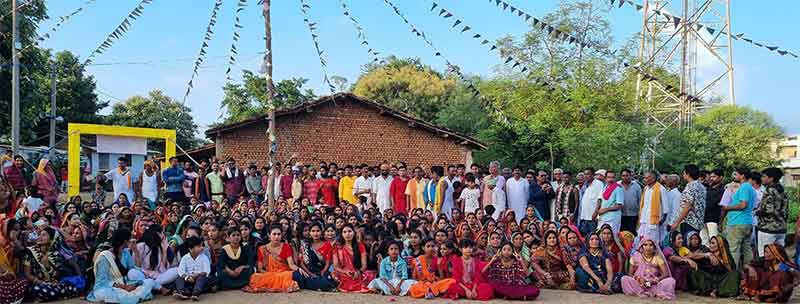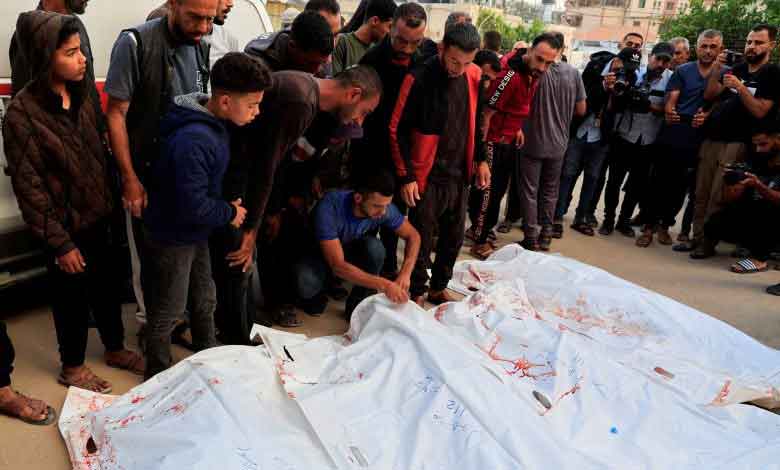
Banjaras are a distinct community dwelling in many states of India, like Karnataka, Maharashtra, Andhra Pradesh, Chattisgarh, Odisha, and some other states. Their language and unique culture work as a thread connecting their dispersed existence in the country. Their cuisine, attire and belief system are also distinguishable. Banjaras are said to be the trading community that kept roaming across the subcontinent for trade purposes.
The data from the Ministry of Culture suggests that Banjaras have around 10 to 20 crore people in the population. Banjara is an umbrella term that may cover many communities with a non-similar culture. In this article, I use the term Banjara to describe the community that worships the saint and social reformer Sant Sevalal Ji Maharaj. Last year, in 2023, the Ministry Of Culture, GoI, celebrated the 284th birth anniversary of Sevalal Ji Maharaj for the first time under the aegis of Azadi ka Amrit Mahotsav.
In this article, I have tried to write about the rituals and significance of the Teej festival of the Banjaras. This article has been prepared based on the observations made in the villages of Kalahandi district of Odisha. This district upholds a crucial portion of the total Banjara population of the entire state of Odisha. A culture is influenced by many factors and aspects of human life, such as society, geography, local language, and the economy. Hence, the data gathered in Kalahandi may vary. Therefore, I have mentioned the scope of the study.
What does Teej signify for the Banjaras?
Teej is celebrated during the waxing moon of the Month of Shravan. It is a ten-day long festival. On the first day, the girls collect fertile soil from the river bank, and various seeds and cereals, like maize, wheat, paddy, and chosen ones are linked into the water. The next day, the sacred cereals are sown in handmade bamboo pots and bowls for germination. A mass gathering performs the ritual with skying musical beats. The cereals are placed with respect to Sant Sevalal, Goddess Merama, Mitu Bhukiya, and other local deities. Elderlies, girl children, and birds are also offered respective cereal bowls. The initiating plants are called ‘Teej’. With the impregnation of the cereals, the breeze of cultural amusement begins to blow for nine days. Every morning starts with girls sprinkling sacredly brought pond water on the Teej, and then it follows the performance of Ladi for a while. The evenings are full of eye-catching gatherings and presentations.
They Dance while singing the Folk Songs in groups. Women perform their dance in a circular movement called Ladi. Their dance steps generally include periodic upward and downward movements of hands with claps in between. The anti-clockwise movement of the circle is called Hubi Ladi, while the clockwise movement is called Pai. Pai is faster and more energetic.
On the other hand, men perform Danda, which means dancing with a small decorated stick in their hands. They also dance in a circular shape. Anticlockwise dance is similarly called Pai. Women sing the song in chorus for the entire period, but in the case of Danda, a lead singer sings the songs, and others follow him in chorus. A piece of dafli-type musical equipment called Dhapda is beaten along with Tashaa and Manjeera in Danda.
Banjaras have a unique attire sense. Women wear lehenga choli and kahali, although saree is becoming dominant now. The ornaments used are spectacular in design and bear interesting names, kakni, banauri, topli, kandora, fasya, titri, natli are some examples. Men generally wear a dhoti and either a kurta or a shirt on top. Pagdi is the marker of Banjara’s identity for men. Some ornaments like kolda and lurki are used by men.
Before dusk every day, after dancing and singing, the boys carry a wooden shield and travel across the bamboo-bearing girls on the road. The boys’ shield is lashed with bamboo unstoppably. Minor injuries get lost amidst laughter and roaring musical beats. The similar rituals are performed almost similarly for eight days. The ninth day appears to be different—a day filled up with both sorrow and delicacy.
The ninth day is called Dhamoli, which means the weakening stage of the Teej. Expert male elders prepare the traditional cuisines of Banjaras. Kadao is a sweet dish offered to Sevalal; Churi is offered to Mitu Bhukiya. Goddess Merama is offered goats. The goat meat is cooked with water and salt and nothing else. After a banquet, Teej’s submersion procession begins towards the river. The goodbye song blooms out of each lip, ‘maari gujari gawalan chaali ye, reho na jaa’, which means my own little girl is going away; how should I bear it?
The Upshots and Opportunities
In today’s globalised world, a community goes through uncountable hardships to keep its members knitted and united. Teej festival is an occasion for its dispersed members to come together. It is also a thread connecting the present generation with their ancestors. While preparing for the festival, Banjaras spend a crucial period of time with the elders, learning the rituals, songs and dance steps.
Liquor and drugs are becoming the undeniable irritants of human life. They are at the root of many social skirmishes and disharmony. Teej prohibits them for the entire period of its observation. Teej also displays gender equality. Girls play a noteworthy role in carrying out the rituals. Teej is a festival celebrated for the sake of girls’ happiness.
Banjaras are closely associated with nature and agriculture. Teej is an agrarian monsoonal function. Sowing cereals is the beginning, and submerging them in the river is the end. During the celebration, clay idols are made and smashed every day. The genital organs of the idol are shown up. They believe that this is the reality of our lives. The body has to get lost in nature one day. The reason behind the exhibition of the genital organs of the idols may be, in my opinion, an extension of reproductive biological education. Banjaras were a migratory community with a tiny population. So, the purpose, perhaps, was to keep the community alive by spreading such awareness.
Subscribe to Our Newsletter
Get the latest CounterCurrents updates delivered straight to your inbox.
Banjaras use hand-loomed clothes, especially women. They make many decorative items during the festival like ‘titri’, which is used to decorate dandas, and girls tie it on the loose end of the saree. They also weave cloth covers knitted with glass pieces and barnacles. Their weaving skill can open up a significant scope for financial earning for the community women. In this era of network and online purchases, their art has the potential to gather ample attention and appreciation.
The attempts, therefore, are needed at a more significant level to unravel the wisdom and skills potentially present among the Banjaras. Teej is a platform where one can gain a sense of them. Our society and market can get new dimensions if Banjaras are studied with that objective.
Bholeswar Naik is a Samvaad Fellow and and a Lecturer in Political Science










































